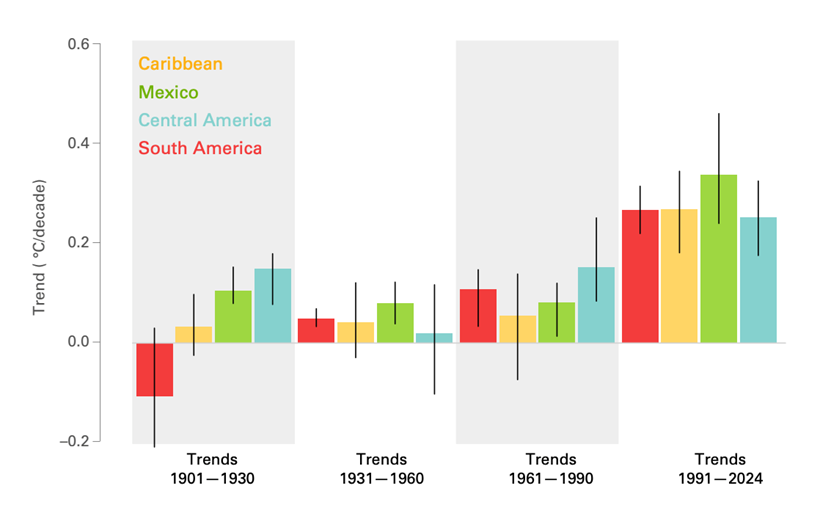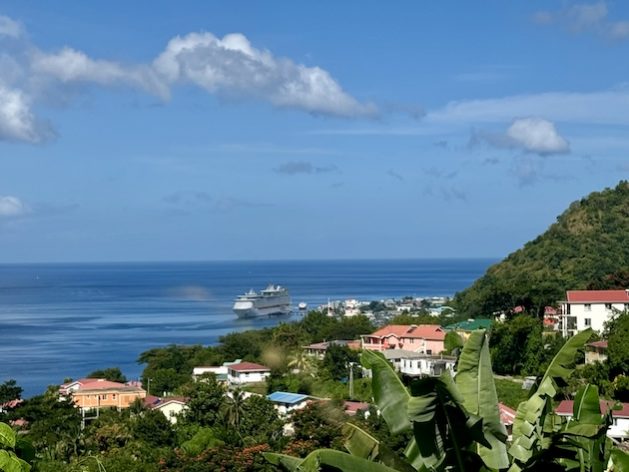DOMINICA, Mar 28 (IPS) – The World Meteorological Organization’s State of the Climate in Latin America and the Caribbean report recounts the toll of record-breaking hurricanes, heat and flooding in the Region, but shines light on renewable energy and a response to the call for robust, end-to-end early warning systems.Hope in the face of climate extremes. That is the overarching message about the State of the Climate in Latin America and the Caribbean in 2024.
The World Meteorological Organization (WMO) issued its annual report on March 28, highlighting the region’s struggles with record-breaking hurricanes, heatwaves, and flooding. Despite these alarming climate extremes, the report emphasizes progress in renewable energy adoption and the development of life-saving early warning systems.
Drought and extreme heat fueled devastating wildfires. Exceptional rainfall triggered unprecedented flooding, and we saw the earliest Category 5 hurricane on record,” said the WMO’s Secretary General, Professor Celeste Saulo.
“But there is also hope. Early warnings and climate services from National Meteorological and Hydrological Services are saving lives and increasing resilience throughout Latin America and the Caribbean. The work of the WMO community and all our partners is more important than ever to meet challenges and seize opportunities.”
Climate Challenges
The report addresses the toll of climate change, with the period 1991-2024 showing an average warming trend of about 0.2 degrees Celsius or higher per decade—the highest since 1990.
Rising sea levels caused by warming oceans and melting ice are threatening coastal communities and ecosystems, particularly on the Atlantic side of South and Central America. Last year, Venezuela became the second country in the world to lose all its glaciers with the disappearance of Humboldt Glacier.
The 2024 Atlantic hurricane season saw 18 named storms, including Major Hurricane Beryl, which became the earliest Category 5 hurricane on record. Beryl caused severe damage across Grenada and other southeastern Caribbean islands, such as Union Island and Carriacou.
Heatwaves, droughts, and wildfires further disrupted agricultural production and food supply chains, driving acute food insecurity in vulnerable areas.
Renewable Energy Progress
The WMO states that in 2024, renewable energy in Latin America and the Caribbean accounted for nearly 69 percent of the region’s energy mix, with a 30 percent increase in solar and wind energy capacity and generation compared to 2023.
The organization states that in order to accelerate the expansion of renewable energy across the region, it is strengthening the capacity of national meteorological and hydrological services to develop science-based operational tools and services through partnerships with academia, the private sector, and energy stakeholders.
“In 2024, an artificial intelligence (AI)-based short-term wind speed forecasting product for wind power plants was co-developed in collaboration with the National Meteorological Institute of Costa Rica and the Costa Rican Electricity Institute. In Chile, an evaporation rate estimation model for large water bodies with floating solar panels was co-developed. Both countries were also supported in their efforts to develop high-resolution national atlases for wind (Costa Rica) and solar energy (Chile), utilizing reanalysis, observational, and climate projection data to support long-term energy planning,” it added.
These innovations are set for expansion across other countries in the region.

Life-Saving Early Warning Systems
Early warning systems (EWS), or tools that alert communities to hazards like storms or floods, have significantly improved across Latin America and the Caribbean. However, disparities remain between countries and regions.
The United Nations Early Warning Systems for All Initiative seeks to ensure global EWS coverage by 2027.
The report cites Brazil’s experience during life-threatening floods in Rio Grande do Sul to illustrate both the benefits and gaps of EWS.
“These floods displaced hundreds of thousands of people and were associated with 183 deaths. Various studies discuss the meteorological and hydrological aspects of the intense rainfall,” the report stated, adding that while timely warnings ensured that vulnerable populations were evacuated, this death toll shows the need for better disaster risk understanding and improved forecasting.
“Ultimately, this case highlights the growing risk caused by extremes, especially to vulnerable populations, as well as the danger caused by inappropriate territorial management, urban planning, and governance at the federal, state, and local levels,” the report said.
The State of the Climate for Latin America and the Caribbean report was presented at a WMO Regional Association meeting hosted by El Salvador to guide climate change adaptation, mitigation, and risk management across Latin America and the Caribbean.
IPS UN Bureau Report
Follow @IPSNewsUNBureau
Follow IPS News UN Bureau on Instagram
© Inter Press Service (2025) — All Rights Reserved. Original source: Inter Press Service




